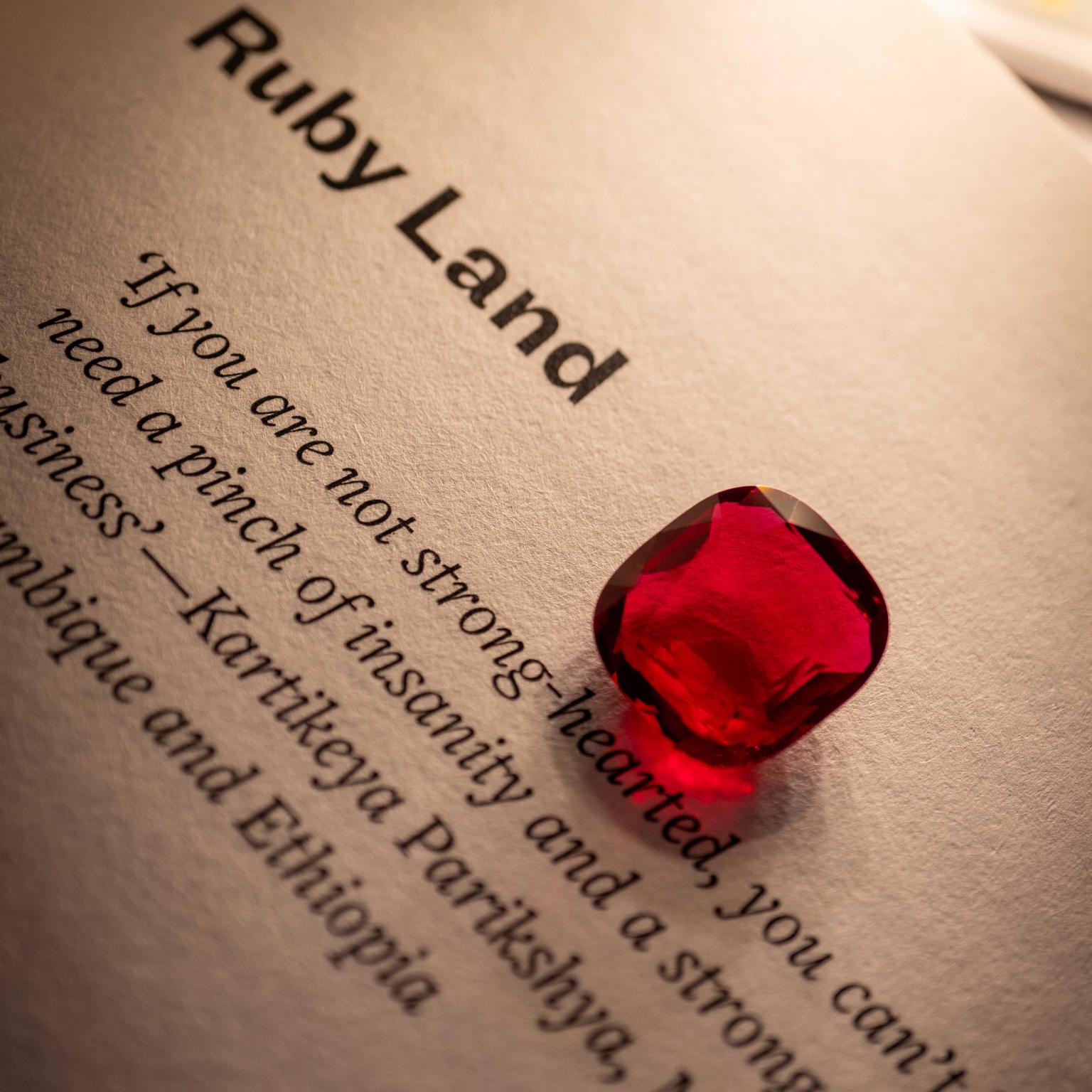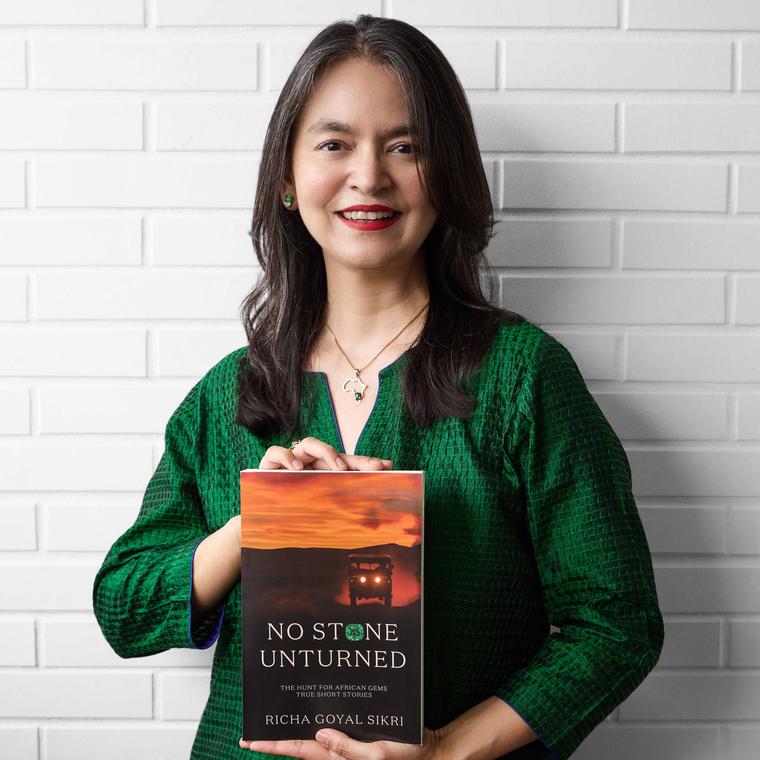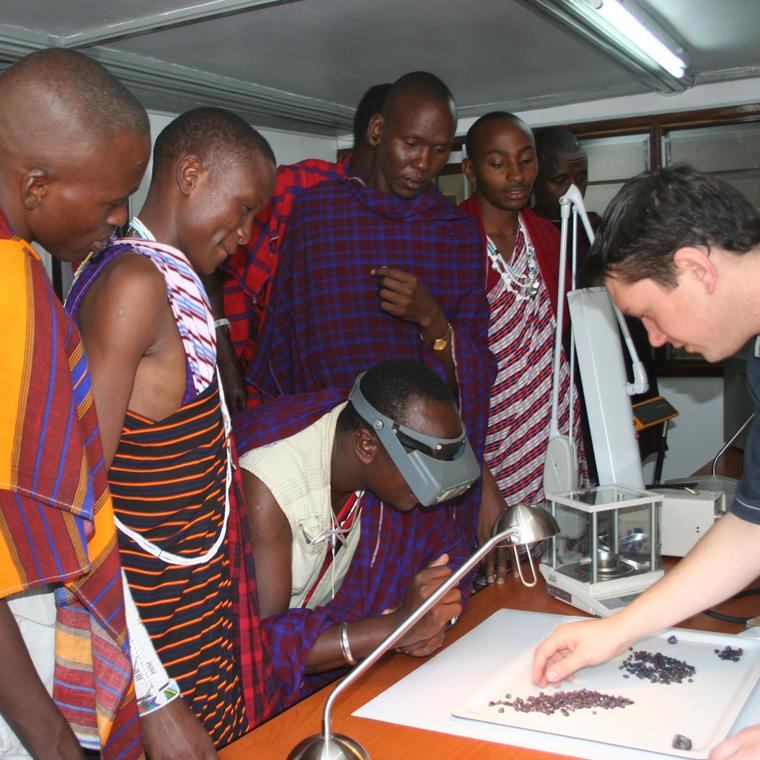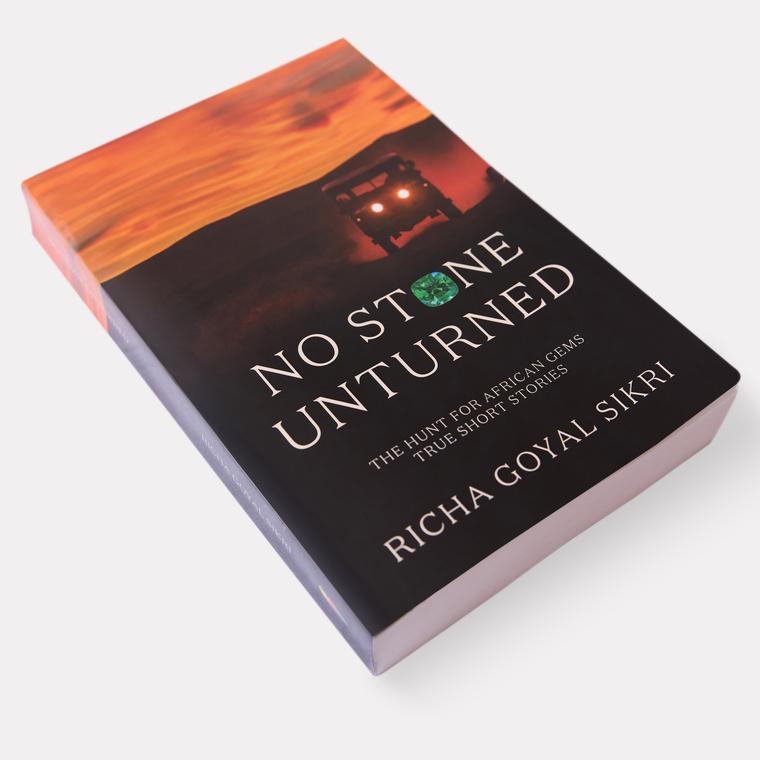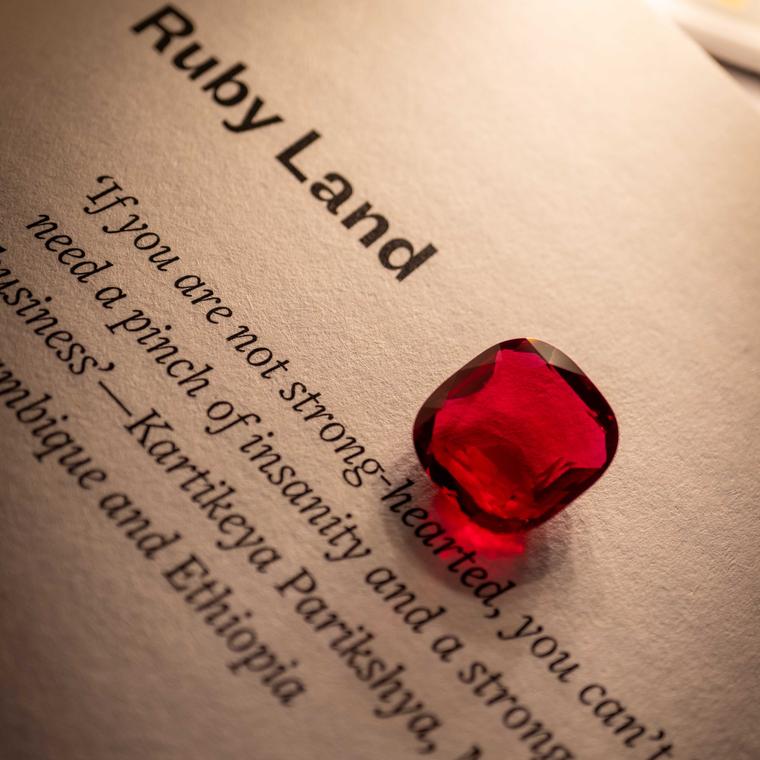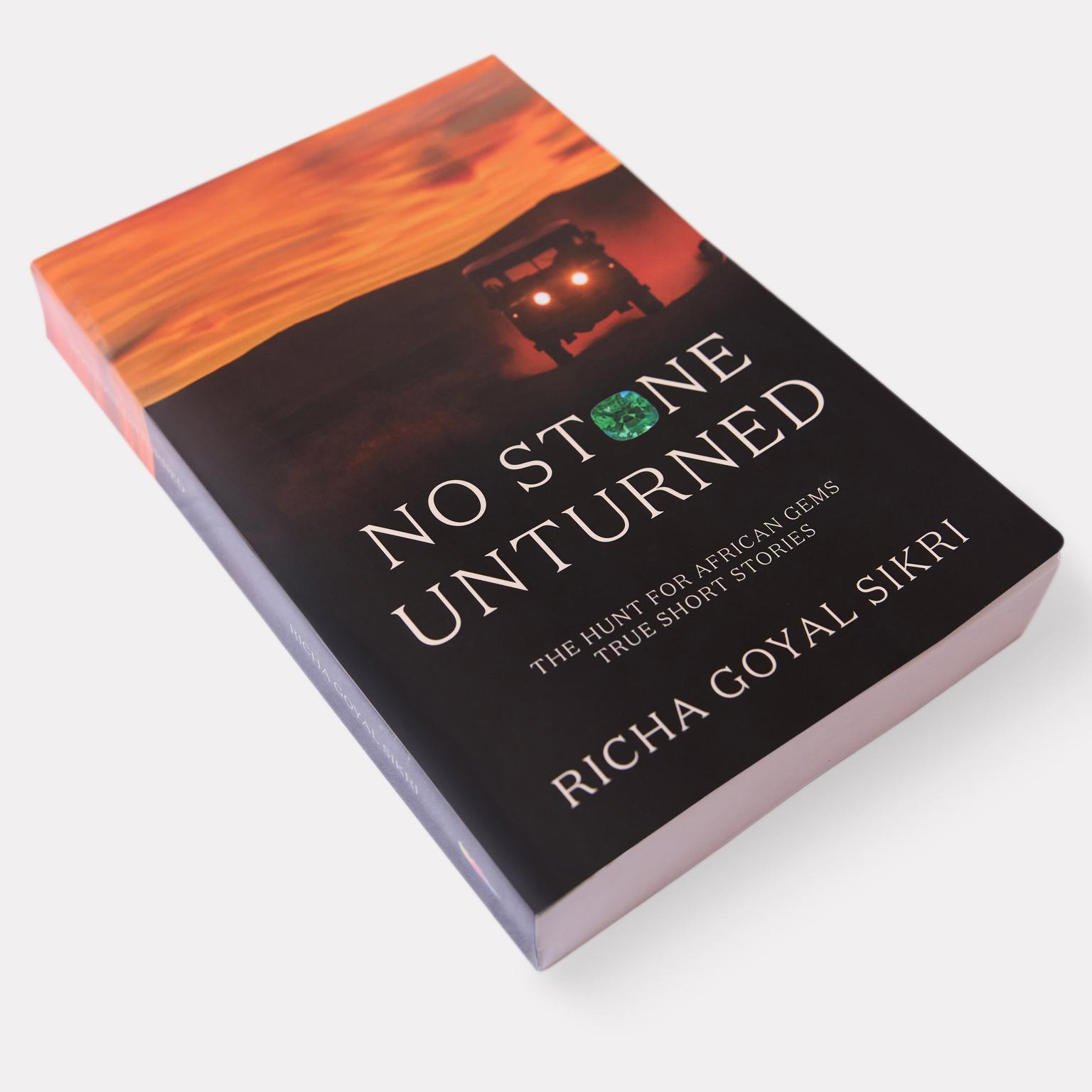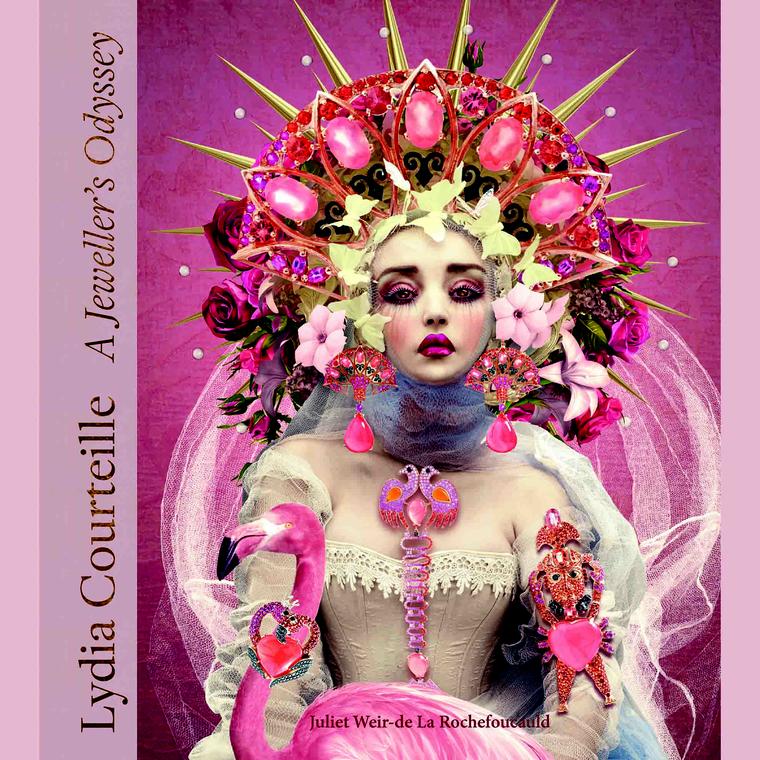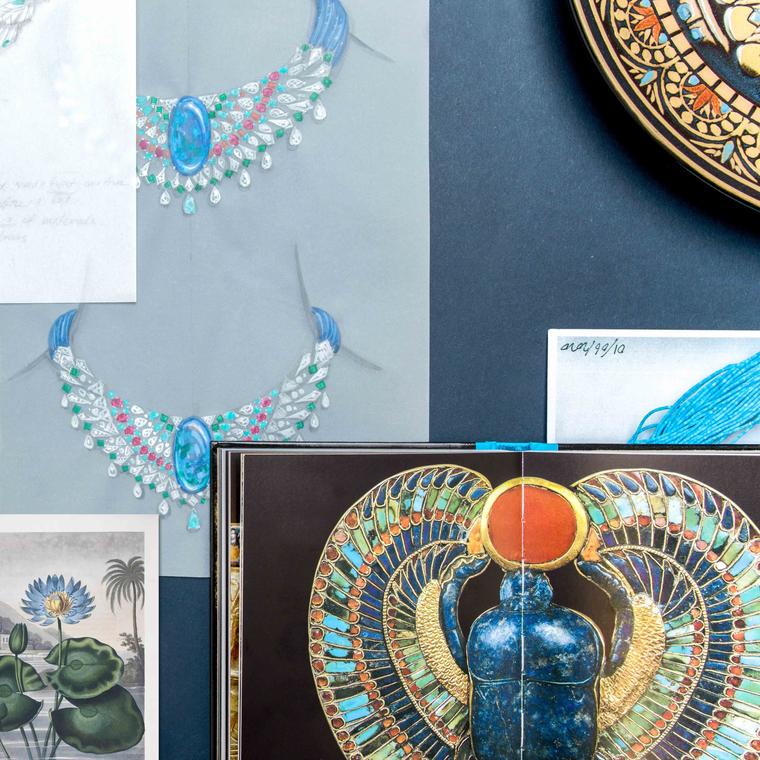The gemstone industry has always been cloaked in secrecy. While the public admires the final product — glittering stones adorning luxury pieces — few are aware of the intricate and often perilous world behind the gems. No Stone Unturned: The Hunt for African Gems, by Richa Goyal Sikri, lifts the curtain, offering a rare glimpse into the hidden workings of the African gemstone trade. Through its 24 fast-paced short stories, the book traces the lives of gem hunters, mine owners, brokers, and legends like gemologist Kenneth Scarratt, bringing to light the personal and professional risks in an industry that thrives on danger and discretion.
Blending some fictional elements into true stories, the book opens with a high-stakes expedition: Julius Petsch’s thrilling journey through Madagascar’s bush in 1968, where he stumbled upon a rare Liddicoatite tourmaline. From here, Sikri weaves a gripping narrative. One chapter kicks off with a death threat; in another, a gem broker is framed in a plot to steal from a mine; elsewhere, a mine owner’s assassination paints a vivid picture of the brutal rivalries that simmer beneath the surface of the gem mining world. Sikri manages to inject a sense of adventure that lends the stories both drama and humour. However, readers should be aware of the book’s perspective — commissioned by Gemfields, the British mining giant that has generated over $643 million in coloured gem auction sales, most stories are aligned closely with the industry’s interests.
Written after four years of rigorous research and countless interviews, No Stone Unturned aims to showcase Africa’s wealth of precious stones while shining a light on the human labour and complex logistics that bring them to market. Sikri’s keen journalist eye follows the journey from mine to market, capturing moments of triumph and treachery along the way. Stories like Grossular Green and Scorpions and Raiders illustrate the daily perils faced by local gem hunters and logistics teams of mines as they navigate dangerous and politically unstable regions.
At its heart, the book is as much about people as it is about stones. Sikri highlights the industry’s unsung heroes, from brokers like Joseph Mbiriri, who hunted for the best tsavorite in Kenya, to tourmaline merchant Moussa Konate in Mozambique. These stories offer a much-needed human touch to an industry often reduced to transactions. Yet for all its vivid storytelling, the book’s lack of direct voices from miners themselves raises questions about whose stories get prioritised. With each story, though, Sikri manages to offer a deeply personal view of the daily lives of industry actors, giving readers an understanding of the challenges they face.
Sikri's portrayal of the mining world doesn’t shy away from its political complexity. Stories of workers fired for theft, police officers bribed, and miners caught in the crossfire between government corruption and people’s movements echo current-day scandals, like this year’s trial of Romy Andrianarisoa, a former politician from Madagascar who attempted to extort a bribe from Gemfields in exchange for authorising the opening of a new mine. In the book, the plight of the Bridges family, tsavorite miners in Kenya, serves as a chilling reminder of the industry's fragility in the face of decolonial and anti-corruption forces. Yet, while these political tensions are touched upon, harsher realities are barely mentioned, notably omitting details like Gemfields’ $7.8m settlement after a lawsuit in Mozambique for alleged human rights abuses.
In the end, No Stone Unturned offers an intimate look into an industry often shrouded in mystery. The human side of the gemstone trade is poignantly portrayed, even if it occasionally skirts the murkier aspects of the business, and it reveals that mining is about adventure, legacy and loyalty as much as it is about wealth.


